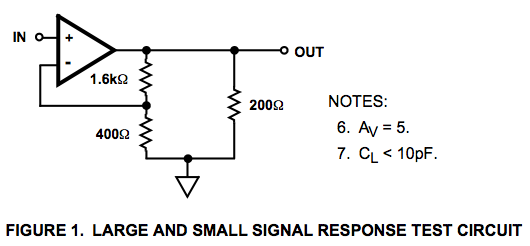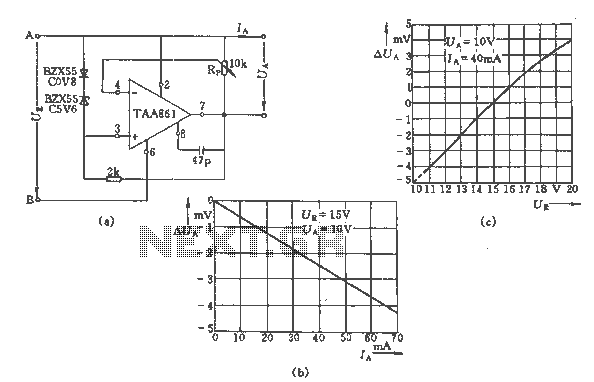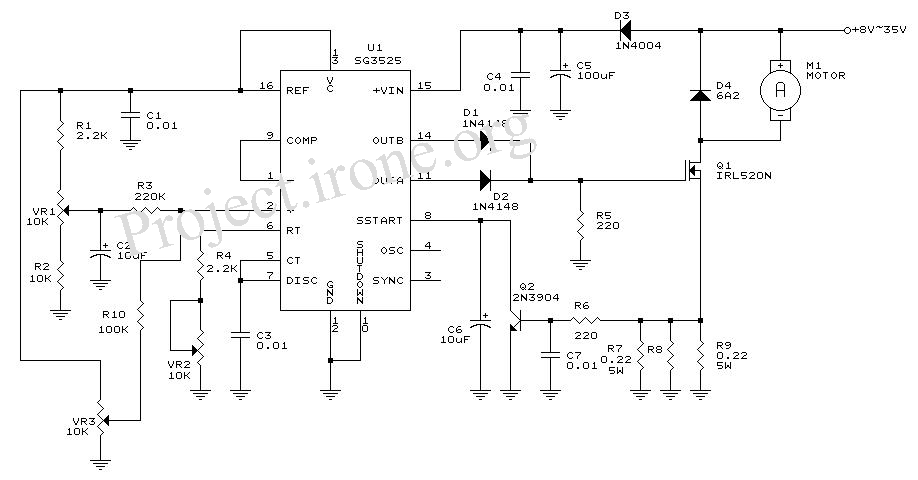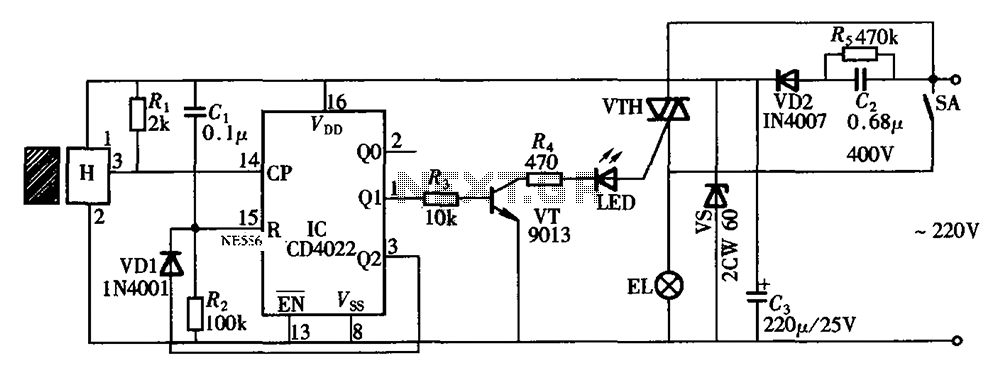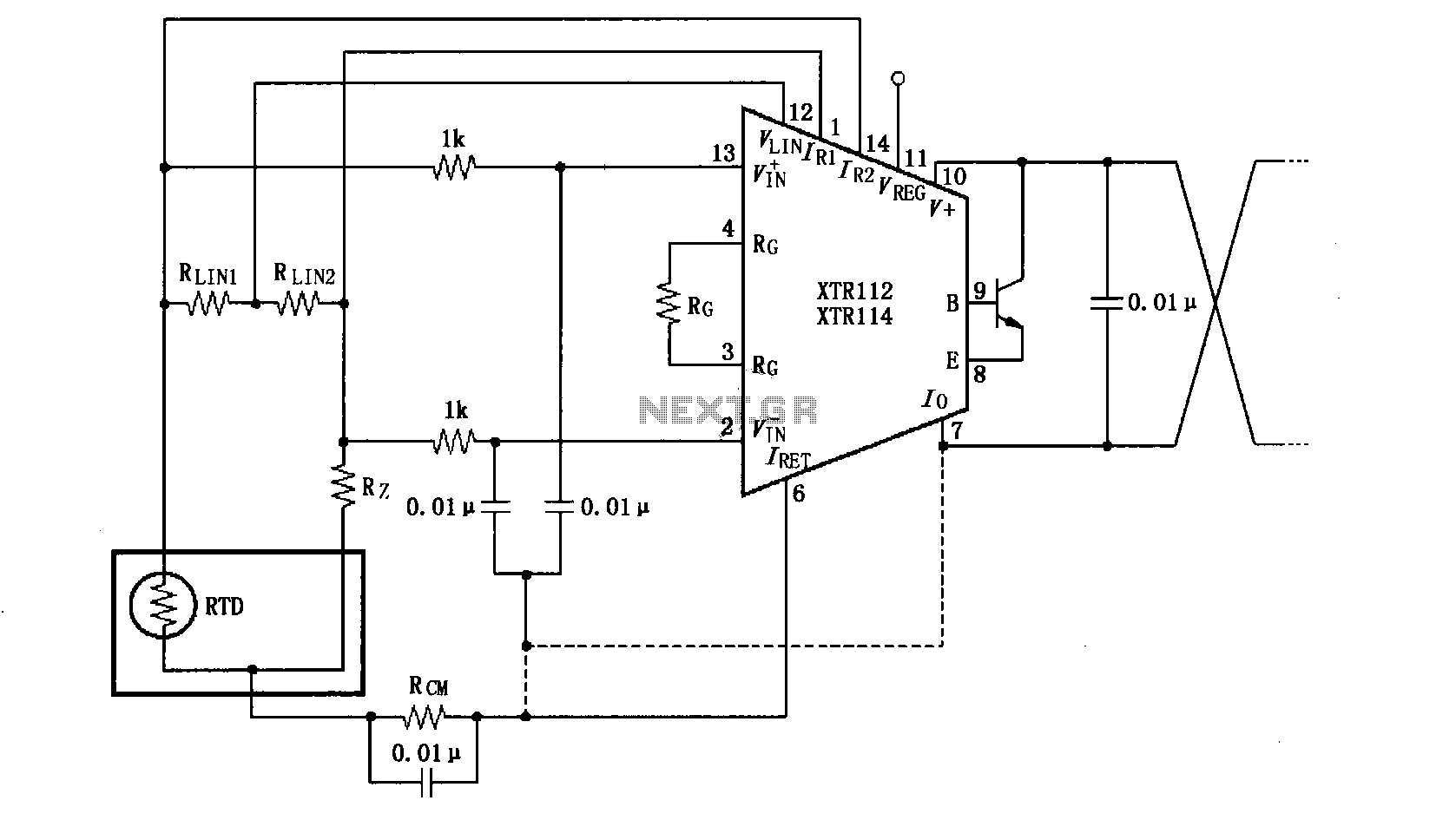
Adjustable gain amplifier circuit diagram of a test device isolation
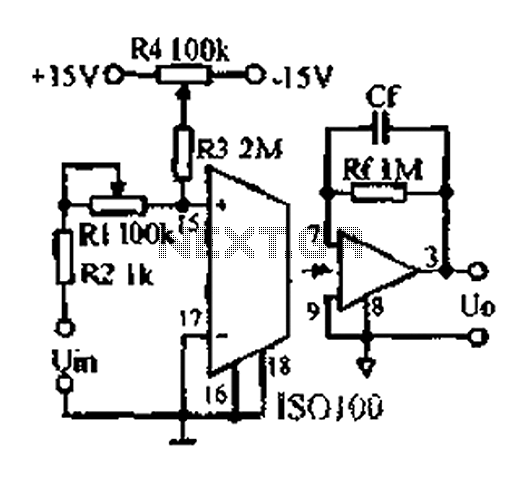
An adjustable gain test is conducted in preparation for an isolation amplifier circuit, utilizing the optical coupling isolation amplifier ISO100. This adjustable gain can form part of a test device for the isolation amplifier. The circuit gain can be adjusted within a range from 10 to 1000. The input code signal will be negative, with the ISO100 input and output powered by two separate 15V supplies.
The described isolation amplifier circuit employs the ISO100, which is known for its high performance in providing electrical isolation while maintaining signal integrity. The adjustable gain feature allows for flexibility in applications that require varying levels of amplification. The gain adjustment is typically achieved using a variable resistor or a digital potentiometer, enabling precise control over the amplification factor.
In this configuration, the input signal, which is negative in polarity, is fed into the ISO100. The amplifier processes this signal while ensuring that any common-mode noise is rejected, thus preserving the quality of the output signal. The output of the ISO100 is also connected to a load or subsequent stage of processing, which can be powered by the same 15V supply that powers the input stage.
The gain range from 10 to 1000 allows for a wide variety of applications, from low-level signal amplification to more substantial signal conditioning tasks. This versatility makes the circuit suitable for use in various fields, including medical instrumentation, industrial monitoring, and communication systems. Proper attention must be given to the power supply decoupling and grounding to minimize interference and ensure stable operation.
Overall, the adjustable gain isolation amplifier circuit using the ISO100 is a robust solution for applications requiring high isolation and variable gain, facilitating accurate signal processing in sensitive environments.Adjustable Gain Test in preparation isolation amplifier circuit as shown below, the use of optical coupling isolation amplifier ISO100, adjustable gain can be composed tone tes t device isolation amplifier. The circuit gain can be adjusted in the range from 10 to 1000. Enter the code signal will be negative. ISO100 input, output, respectively, by two 15V supply.
The described isolation amplifier circuit employs the ISO100, which is known for its high performance in providing electrical isolation while maintaining signal integrity. The adjustable gain feature allows for flexibility in applications that require varying levels of amplification. The gain adjustment is typically achieved using a variable resistor or a digital potentiometer, enabling precise control over the amplification factor.
In this configuration, the input signal, which is negative in polarity, is fed into the ISO100. The amplifier processes this signal while ensuring that any common-mode noise is rejected, thus preserving the quality of the output signal. The output of the ISO100 is also connected to a load or subsequent stage of processing, which can be powered by the same 15V supply that powers the input stage.
The gain range from 10 to 1000 allows for a wide variety of applications, from low-level signal amplification to more substantial signal conditioning tasks. This versatility makes the circuit suitable for use in various fields, including medical instrumentation, industrial monitoring, and communication systems. Proper attention must be given to the power supply decoupling and grounding to minimize interference and ensure stable operation.
Overall, the adjustable gain isolation amplifier circuit using the ISO100 is a robust solution for applications requiring high isolation and variable gain, facilitating accurate signal processing in sensitive environments.Adjustable Gain Test in preparation isolation amplifier circuit as shown below, the use of optical coupling isolation amplifier ISO100, adjustable gain can be composed tone tes t device isolation amplifier. The circuit gain can be adjusted in the range from 10 to 1000. Enter the code signal will be negative. ISO100 input, output, respectively, by two 15V supply.
